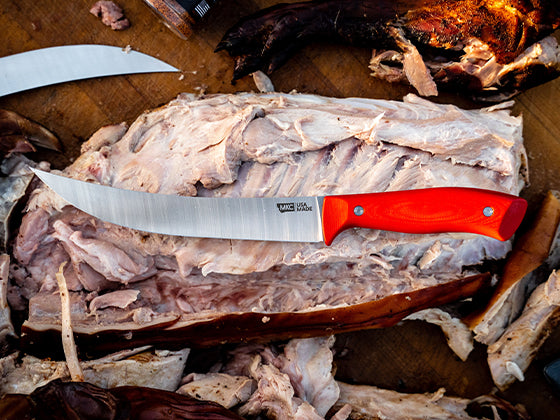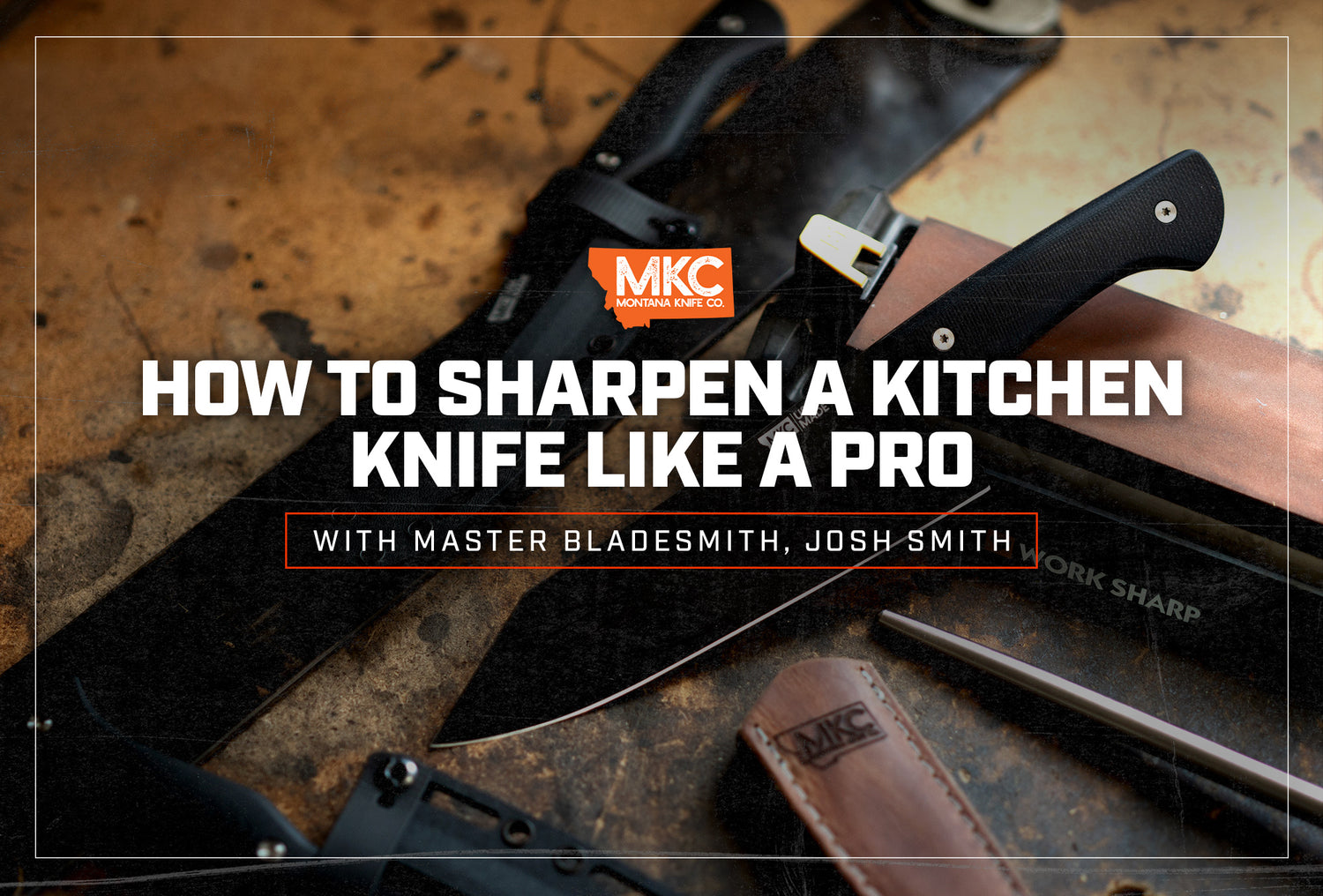Keeping your kitchen knives sharp makes slicing, dicing, and chopping much easier and safer.
When I teach kids how to use kitchen knives, I always use a sharp blade rather than a dull one. It can be difficult to slice through an apple or a loaf of bread with a dull knife, which increases the likelihood of accidental cuts.
That’s not to say you should throw your knives away once they lose their razor-like edge. Today, I’ll explain how to sharpen kitchen knives to keep your blades in great shape for even the most challenging culinary tasks. I’ll also share some of the ways I keep my blades sharp in between sharpening sessions.
How Often Should You Sharpen Your Kitchen Knives?
There are two ways you can sharpen your kitchen knives:
- Touch up the edge with a honing rod to realign the burr.
- Fully sharpen with a stone or sharpener.
If you use your kitchen knives frequently, sharpening them once a month is a good rule of thumb. Additionally, hit the edge on a honing rod once a week to keep the knife nice and precise between sharpening sessions.
Different Sharpening Tools and Methods
The most popular way to sharpen a chef’s knife is with a honing rod. For example, my mom has exclusively used a honing rod for years, and her knives are in good shape. However, using a honing rod and a stone or sharpener is the best way to sharpen a kitchen knife.
I recommend using a Work Sharp combination whetstone with 1,000 grit on one side and 6,000 grit on the other. On the finer side, you can remove some steel and reset the edge (sharpening). On the rougher side, you can refine the edge and reduce the burr (honing).
I don’t recommend the popular pull-through knife sharpeners you see at most big-box retailers. Because there’s only one point of contact on the stone, these sharpeners wear out quickly, and they don’t do nearly as good a job as whetstones.
A sharp chef’s nice is handy and makes preparing food much quicker (and safer). Many people don’t realize what they’re missing out on by using a dull chef’s knife, especially since resharpening knives isn’t very difficult.
Here’s how to sharpen kitchen knives using my favorite method — the combination whetstone.

Best Way to Sharpen a Kitchen Knife
First thing’s first: When sharpening a chef’s knife with a whetstone, always keep the knife at a 15° angle.
Start on the 1,000-grit side of the whetstone. Reestablish the bevel on one side of the knife until you feel you’ve worked out the “dings” and flat spots on the edge. Then, flip to the other side and repeat. Create a burr before moving to the next side of the whetstone.
Next, flip the whetstone over to the 6,000-grit side. With lighter pressure, take alternating passes from side to side on the blade until you’ve honed the burr down and feel you have a consistent, fine, clean edge. Finish the knife with a leather strop or a fine ceramic rod to remove any excess heavy burr.
Maintaining the Correct Angle: Tips and Tricks
I’ve met several knife owners who are hesitant to use a whetstone, mostly because they’re afraid of getting the angle wrong.
I always encourage these owners to use a Work Sharp combination whetstone. The sharpener comes with reversible pieces at the end of the stone that are preset to create a 15° or 17° angle. These pieces are also removable if you want them out of your way.
Still nervous about ruining your nice set of kitchen knives? Practice on a cheaper knife. If you take your time and follow the instructions above, your knife will be safe.
It also helps to know whether you’re using a water or oil stone. As evidenced by the name, a water stone needs to be used with water, and an oil stone needs to be used with — you guessed it — oil.
If the stone is dry, it’ll take damage during sharpening. Water stones are softer than oil stones, so be sure to wash them with soap and water to clean off excess material after a sharpening session.
What’s the Best Way to Test a Kitchen Knife’s Sharpness?
You can test a kitchen knife’s sharpness in a few different ways. Some owners like to run their knife along a fingernail, but I prefer cutting paper. It’s safe, and the paper will absolutely show you if there’s a dead or damaged spot on the blade.
Use fine paper, like newspaper, for the best results. The knife edge will either hang up, slide across the paper without cutting, or glide through the paper, which is the ideal result.
How Can I Prolong the Lifespan of My Kitchen Knife?
Want to extend the lifespan of your kitchen knives and prolong the time between sharpening? Hone your knives with a rod every week or so to realign the microserrations on the blade.
It’s also wise to place your kitchen knives in a sheath. Not only will this keep your blades sharper for longer by preventing them from banging against other silverware, but it also protects children (and adults!) who reach into a knife drawer without realizing a sharp blade is inside.
Finally, don’t put your kitchen knives in the dishwasher or soak them in water. The sheaths, especially, shouldn’t go through the dishwasher — they can melt from the heat.
Now that you know the best way to sharpen a kitchen knife, your blades will keep cutting for generations. But if you ever feel in over your head, you can always send your Montana Knife Company blades back to us, and we’ll resharpen and restore them for free.
by Josh Smith, Master Bladesmith and Founder of Montana Knife Company







































